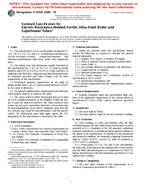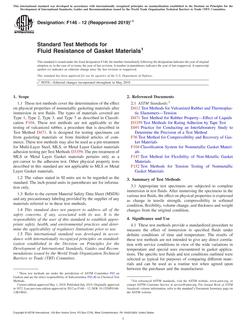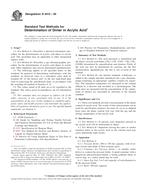1.1 This specification covers polypropylene materials suitable for injection molding and extrusion. Polymers consist of polypropylene homopolymers, polypropylene copolymers, and polypropylene-elastomer compounds produced with or without the addition of impact modifiers (ethylene-propylene rubber, polyisobutylene rubber, and butyl rubber, and so forth), colorants, stabilizers, lubricants, fillers, or reinforcements.
1.2 This specification allows for the use of those polypropylene materials that can be recycled, reconstituted, and reground, provided that the following conditions are met:
1.2.1 The requirements as stated in this specification and other ISO guidelines pertaining to these types of materials are met, and
1.2.2 The material has not been modified in any way to alter its conformance to food contact regulations or similar requirements.
1.3 The proportions of recycled, reconstituted, and regrind material used, as well as the nature and the amount of any contaminant, cannot be practically covered in this specification. It is the responsibility of the supplier and buyer of recycled, reconstituted, and regrind materials to ensure compliance.
1.4 The properties included in this classification system are those required to identify the compositions covered. There may be other requirements necessary to identify particular characteristics important to specialized applications. These may be specified by using the suffixes as given in Section and those in Classification System D 4000.
1.5 This classification system and specification are intended to provide a means of calling out polypropylene materials used in the fabrication of end items or parts. It is not intended for the selection of materials. Material selection should be made by those having expertise in the plastic field after careful consideration of the design and the performance required of the part, the environment to which it will be exposed, the fabrication process to be employed, the costs involved, and the inherent properties of the material other than those covered by this specification.
1.6 The values stated in SI units are to be regarded as the standard.
Note 1
This specification is similar to both ISO 1873-1 and ISO 1873-2, but to different degrees. This specification resembles ISO 1873-1 in title only. The content is significantly different. This specification and ISO 1873-2 differ in approach or detail; data obtained using either are technically equivalent.
Product Details
- Published:
- 09/01/2007
- Number of Pages:
- 21
- File Size:
- 1 file , 190 KB
- Redline File Size:
- 2 files , 340 KB


